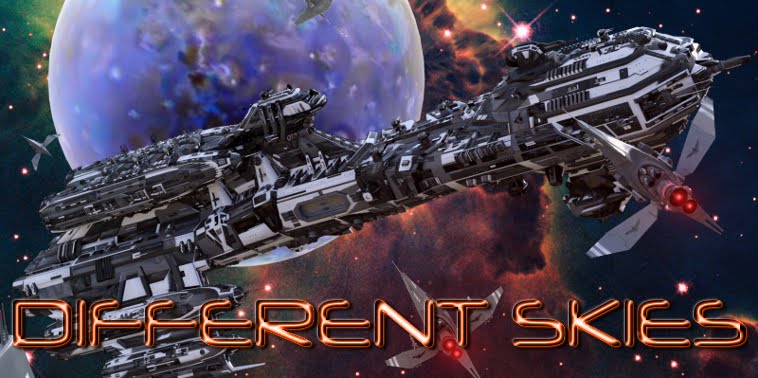I've done a couple of blogs about some of the social issues in a future universe, but this time I'm turning to the topic of future firearms and why there may never be 'a last bullet'
Whether its called a blaster, a phaser, or just a beam weapon science fiction loves what they like to refer to in modern military parlance as directed energy weapons. Stripped down to its basics a directed energy weapon does away with a projectile in favour of a focused beam of energy, lasers being the best known example. Science fiction stories assume that you can turn something like the HEL MD into a rifle or pistol sized weapon. While we're all familiar with the way all manner of technology has been miniaturized to the point of being handheld, but in doing so the power requirements have been massively reduced. For a DEW this is obviously not a viable option, the power it can deliver to a target is the whole point of the thing. This is going to not only require a battery with quite astonishing storage density, but there is also the issue of converting the charge into the battery into a beam of energy. The laws of physics dictate that is not going to be 100% efficient, there's going to a be certain amount of waste energy, and waste energy usually manifests itself as heat. So now your DEW needs either active cooling, fans or refrigeration, or some kind of radiator and if you want dissipate that heat quickly it's going to be a big radiator.
Now in a science fiction universe all these problems can be resolved, infinite storage and perfect energy conversion are a snap if you can imagine a universe with teleportation and FTL. The thing is though why would anyone put in the effort to begin with? Turning HEL MD into a rifle is going to be a long evolutionary process and what we have right now works pretty well, indeed you can argue that from a caveman throwing a rock at an animal to the state of the art railguns being developed for next generation warships is an unbroken line of projectile weapons. Simply put guns work, they get the job done so why would anyone want to spend the time, effort, and money on making your blaster/phaser possible?
The Star Trek phaser actually illustrates one of the better reasons to invest in a handheld DEW, the power can be dialled up or down depending on the situation. Now the nice neat delineation between a stun and lethal setting is a little unlikely, but the idea of a weapon that could be varied from simply inflicting pain at the bottom end of its range to a lethal shot at the top end is not unreasonable is not unreasonable and offers more flexibility, particularly valuable in our current day world where combatants are often hard to tell from the innocent bystanders.
The other big attraction is ammunition, both the weight of it for the soldier and the logistics of supplying it. Modern firearms can eat through ammunition at a frightening rate and despite the tendency towards smaller calibre ammo with lighter rounds the weight is still a burden for the soldier who faces the dilemma of carrying enough into battle for extended combat or risk running out because supplying ammo to a fast moving front line is a challenge for any military organization, especially if your means of delivery is liable to come under attack and you can't just make more out in the field. Now with a DEW the soldier effective can make their own ammo, they just need an energy resource to tap into, that might be anything from a solar panel to a power socket in some home or factory. Lifting the burden of worrying about ammo would be a major incentive to adopt energy weapons on a wider basis.
Now this isn't a matter of one side of this being right or wrong, really it's just to show that you can make an argument for whichever approach you want to take with weapons in your story, you can justify sticking to the tried and trusted bullet or go with a light show of different types of DEW. Only thing I can't come up with is an explanation for why so many beam weapons in TV and movies seem to fir a burst that travels at about walking pace...

No comments:
Post a Comment